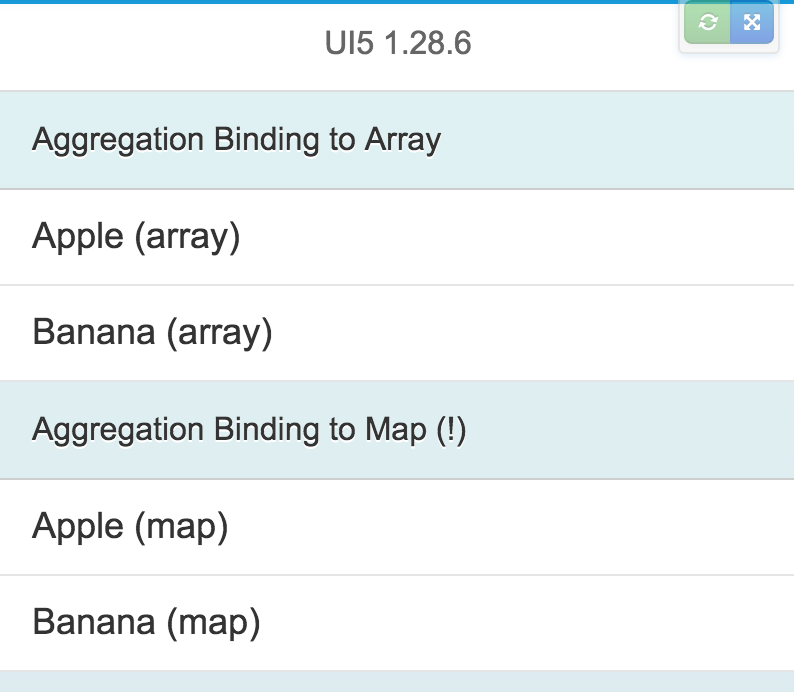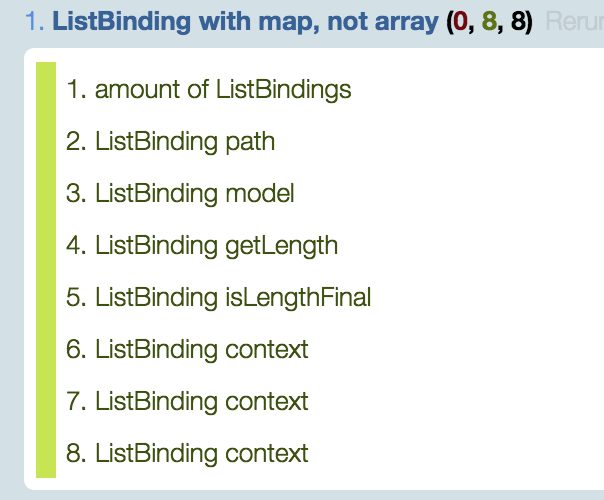JSON List Binding and maps
This morning, on a long train journey up from near Reading to Barnsley, I was hacking on a UI5 app. I had a custom module to munge some JSON data into the shape I needed, and was binding the items aggregation of a List control to part of the resulting data structure.
In the developer console, I was examining the data structure in the JSON Model that was set on the List, and did a double-take. I’d mistakenly generated a map rather than an array, as the value of the property to which I wanted to bind the items aggregation. Naturally, I thought, it needed to be an array, but I had spotted that it was a map – the output of a nice little reduce function I was nicely proud of, with my functional JavaScript hat on (but that’s another story).
So I looked across to the app itself, expecting the List to be empty. But it wasn’t! It was showing exactly what I had expected to see, had the value of the property been an array. What was going on?!
After some digging, I found out. Introduced on 10 Dec 2014, within the 1.28.0 release, was a modest feature:
**[[FEATURE] sap.ui.model.json.JSONListBinding: iterate over maps](https://github.com/SAP/openui5/commit/38ab764601c061d5fbf256f8bb4703cd4ec89022)** Enhance JSONListBinding to iterate over maps (by key), not just over arrays (by index).Interesting! A small modification to the JSON List Binding to treat the indices of a map as if they were of an array. After all, in JavaScript, arrays and maps are perhaps more closely related than one might think.I set about confirming what I’d found with a small test on Plunkr, “Aggregation Binding Test“:

But don’t take my word for it – the author has also added a test to the JSON List Binding QUnit tests:

It makes sense to blur the distinction between maps and arrays when it comes to aggregation bindings; already I have a use for it, and I didn’t even know the feature had been implemented!